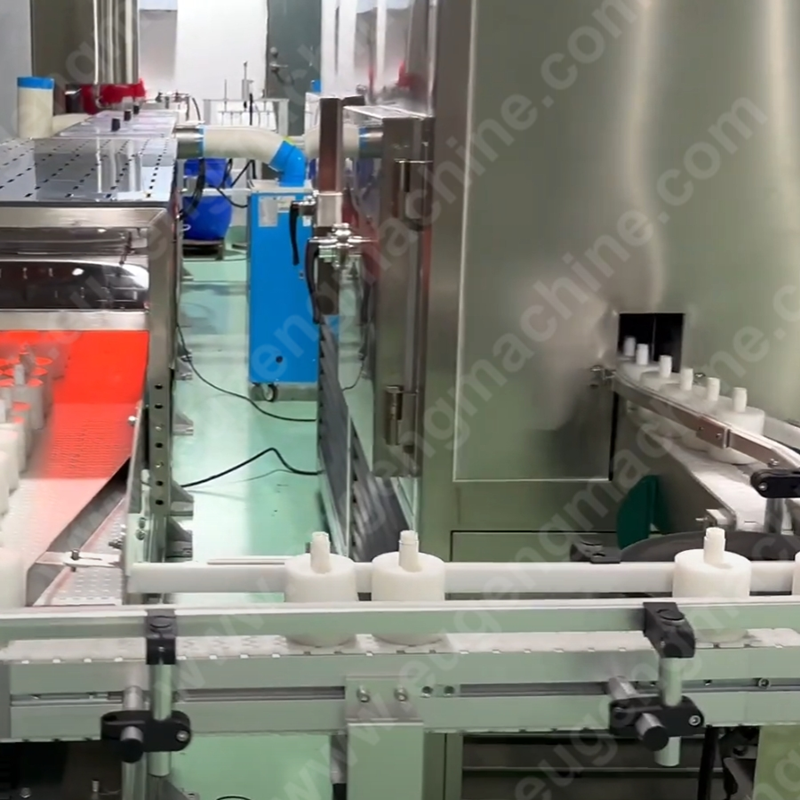Balm filling machines play a crucial role in ensuring efficient production. However, when problems arise, they can disrupt your workflow and lead to wasted resources. Issues like inconsistent filling levels, leaks, or sudden stoppages are common challenges you might face. Understanding how to troubleshoot common issues is essential to keep your machine running smoothly. With the right approach, you can identify the root cause of these problems and apply effective solutions to restore optimal performance.
How to Troubleshoot Common Issues with Inconsistent Filling Levels
Recalibrating the machine
Recalibration ensures the machine dispenses the correct amount of balm. Follow the manufacturer’s guidelines to adjust the settings. Test the machine with a few containers to confirm that the issue has been resolved. Regular calibration prevents future inconsistencies.
Cleaning and unclogging the filling nozzle
Inspect the filling nozzle for any residue or blockages. Use appropriate cleaning tools to remove buildup. Cleaning the nozzle after each production cycle minimizes the risk of clogs and ensures smooth operation.
Adjusting machine settings for different viscosities
If you notice variations in balm viscosity, adjust the machine settings accordingly. Some machines allow you to modify the pressure or speed to accommodate different consistencies. Testing these adjustments with small batches helps you find the optimal settings for your product.
How to Troubleshoot Common Issues with Leaks
Inspecting and replacing seals
Examine all seals for signs of wear or damage. Look for cracks, tears, or hardening. Replace any compromised seals immediately. Use high-quality replacement seals that match the manufacturer’s specifications to ensure a proper fit and long-lasting performance.
Tightening loose connections
Check all connections, including screws, bolts, and fittings. Use the appropriate tools to tighten any loose components. Regularly inspect these areas to prevent future leaks caused by vibrations or wear.
Monitoring and maintaining proper reservoir levels
Avoid overfilling the product reservoir. Use the machine’s guidelines to determine the maximum fill level. Monitor the reservoir during operation to ensure it stays within the recommended range. Maintaining proper levels reduces pressure and prevents unnecessary leaks.
How to Troubleshoot Common Issues with Machine Stoppages
Checking and restoring power supply
Inspect the power supply to ensure it is stable and reliable. Check all plugs, wires, and connections for any signs of damage or looseness. Use a voltage stabilizer if necessary to maintain consistent power. Regularly monitoring the electrical system helps you identify and fix issues before they cause stoppages.
Ensuring proper ventilation and cooling
Keep the machine’s ventilation system clean and unobstructed. Remove dust and debris from vents and fans to improve airflow. Position the machine in a well-ventilated area to prevent overheating. If the machine operates in a high-temperature environment, consider using additional cooling equipment to maintain optimal conditions.
Inspecting and replacing worn-out parts
Examine all mechanical components for signs of wear or damage. Replace worn-out parts like belts, gears, or bearings promptly to avoid further complications. Follow the manufacturer’s maintenance schedule to ensure all components remain in good condition. Keeping spare parts on hand can minimize downtime when replacements are needed.
Preventative Measures to Avoid Common Problems
Preventative measures are essential for maintaining the efficiency and longevity of your balm filling machine. By adopting proactive practices, you can minimize downtime and avoid the need to troubleshoot common issues. Below are key strategies to help you prevent problems before they arise.
Regular Maintenance Practices
Cleaning the machine after every production cycle ensures smooth operation. Residue from the balm can accumulate in nozzles, seals, and other components, leading to clogs or wear. Use appropriate cleaning tools and solutions to remove buildup. Consistent cleaning prevents blockages and keeps the machine functioning at its best.
Lubrication reduces friction between moving parts, preventing wear and tear. Apply the recommended lubricant to gears, bearings, and other mechanical components. Follow the manufacturer’s guidelines for frequency and type of lubricant. Proper lubrication extends the lifespan of your machine and ensures seamless operation.
Regular inspections help you identify potential issues early. Check for loose connections, worn-out seals, or unusual noises during operation. Inspect electrical components and ensure proper alignment of mechanical parts. Addressing minor problems during inspections prevents them from escalating into major repairs.
Proper Machine Handling
Proper training equips your team with the knowledge to operate the machine safely and efficiently. Teach staff how to adjust settings, handle materials, and perform basic troubleshooting. Well-trained operators reduce the risk of errors and ensure consistent performance.
Always use materials that match the machine’s specifications. Incorrect materials or improper settings can strain the machine and cause malfunctions. Refer to the user manual to determine the appropriate settings for different balm viscosities. Using the right materials and settings optimizes performance and prevents unnecessary wear.
Addressing problems with your balm filling machine quickly ensures smooth production and minimizes downtime. Regular maintenance and proper handling play a vital role in preventing recurring issues. Cleaning, inspecting, and calibrating the machine consistently keeps it in top condition. By taking proactive steps, you can troubleshoot common issues effectively and maintain optimal performance. Equip yourself with the right tools, knowledge, and spare parts to stay prepared for any challenges.

 EN
EN
 AR
AR BG
BG HR
HR CS
CS DA
DA NL
NL FI
FI FR
FR DE
DE EL
EL HI
HI IT
IT JA
JA KO
KO NO
NO PL
PL PT
PT RO
RO RU
RU ES
ES SV
SV TL
TL IW
IW ID
ID LV
LV LT
LT SR
SR UK
UK VI
VI HU
HU TH
TH TR
TR FA
FA MS
MS UR
UR BN
BN LO
LO LA
LA PA
PA
